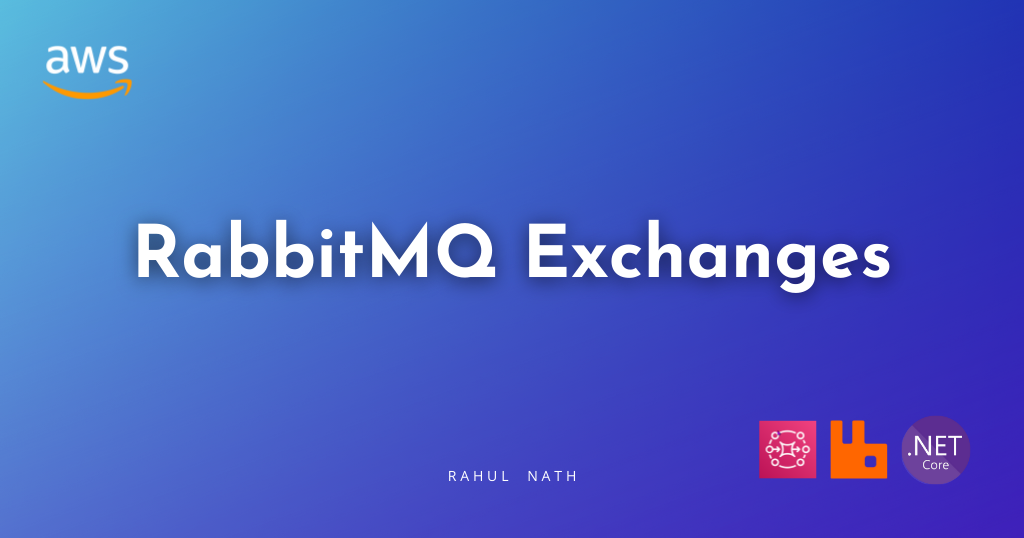Understanding RabbitMQ Exchange Types: Direct, Fanout, Topic, and Headers
 Shivam Dubey
Shivam Dubey
In RabbitMQ, Exchanges are responsible for routing messages from producers to queues based on specific rules. RabbitMQ supports different types of exchanges, and each type serves a distinct purpose.
In this guide, we will explore the four main exchange types in RabbitMQ:
Direct Exchange
Fanout Exchange
Topic Exchange
Headers Exchange
We’ll break down how they work, their use cases, pros and cons, and provide flowcharts for better understanding.
📦 1. Direct Exchange
A Direct Exchange delivers messages to queues based on an exact match between the routing key of the message and the binding key of the queue.
How It Works:
Producers publish messages with a routing key.
The exchange looks for queues that are bound with the same binding key.
If there’s a match, the message is delivered to the queue.
Flow Chart:
Producer → Exchange (Direct) → [ Binding Key = 'order.created' ] → Queue A
→ [ Binding Key = 'payment.completed' ] → Queue B
Use Case:
Ideal for message routing where exact matching is required.
Example: Order processing systems where different queues handle
order.createdandpayment.completedevents.
Pros:
Simple and easy to implement.
Efficient for specific routing.
Cons:
- Not suitable for complex routing scenarios.
📢 2. Fanout Exchange
A Fanout Exchange sends messages to all queues bound to it, ignoring routing keys.
How It Works:
Producers send messages to the exchange without specifying a routing key.
The exchange copies the message to all bound queues.
Flow Chart:
Producer → Exchange (Fanout) → Queue A
→ Queue B
→ Queue C
Use Case:
Ideal for broadcasting messages to multiple consumers.
Example: Sending notifications to all microservices when a new version is deployed.
Pros:
Simple and reliable for broadcasting.
Efficient for event-driven architectures.
Cons:
- No control over which queue receives the message.
🏷 3. Topic Exchange
A Topic Exchange routes messages based on wildcard patterns matching the routing key and binding key.
How It Works:
Routing keys are usually in dot-separated format (e.g.,
order.created.us).Binding keys use
*(matches one word) and#(matches multiple words).Messages are routed to queues where the pattern matches.
Flow Chart:
Producer → Exchange (Topic) → [ Binding Key = 'order.*' ] → Queue A (Matches 'order.created')
→ [ Binding Key = 'order.#' ] → Queue B (Matches 'order.created.us')
Use Case:
Ideal for complex routing scenarios.
Example: Log management systems where logs are routed by severity and region.
Pros:
Flexible and powerful routing.
Supports dynamic routing patterns.
Cons:
- Slightly more complex to set up.
🛡 4. Headers Exchange
A Headers Exchange uses message headers instead of routing keys to route messages.
How It Works:
Producers add headers (key-value pairs) to messages.
Queues are bound to the exchange with header matching criteria.
The exchange routes messages if headers match.
Flow Chart:
Producer → Exchange (Headers) → [ Headers: {type: 'payment', format: 'json'} ] → Queue A
→ [ Headers: {type: 'order', format: 'xml'} ] → Queue B
Use Case:
Ideal for routing messages based on custom metadata.
Example: Payment systems where messages are routed based on payment method and currency.
Pros:
Highly customizable routing.
No reliance on routing keys.
Cons:
- Slightly slower due to header matching.
✅ Conclusion
| Exchange Type | Use Case | Pros | Cons |
| Direct Exchange | Task-specific message routing | Simple and efficient | Limited flexibility |
| Fanout Exchange | Broadcast messages to multiple queues | Easy to implement | No selective routing |
| Topic Exchange | Pattern-based routing | Flexible and scalable | Complex setup |
| Headers Exchange | Metadata-based routing | Highly customizable | Slower performance |
Choosing the right exchange depends on your application's needs. For simple routing, use Direct. For broadcasting, Fanout is best. If you require complex routing, go for Topic. And if custom headers are needed, Headers is a powerful choice.
Happy Messaging with RabbitMQ! 😊
Subscribe to my newsletter
Read articles from Shivam Dubey directly inside your inbox. Subscribe to the newsletter, and don't miss out.
Written by
